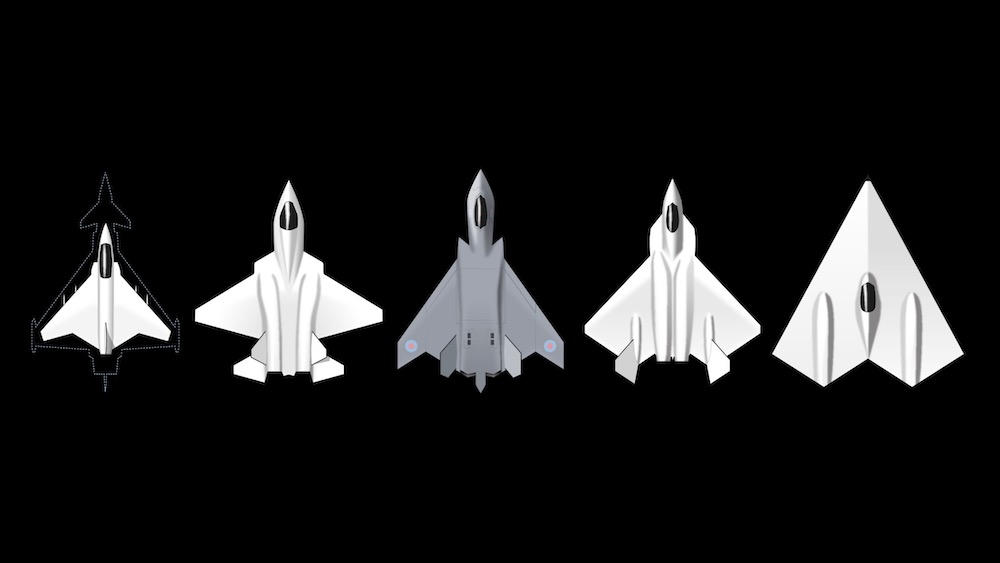Click Here to View This Page on Production Frontend
Click Here to Export Node Content
Click Here to View Printer-Friendly Version (Raw Backend)
Note: front-end display has links to styled print versions.
Content Node ID: 407849
The twin-tailed, delta-winged, “pelicanesque” configuration of the Tempest sixth-generation manned fighter concept has become familiar from numerous CGI artworks and from the presence of a full-scale mockup at various air and trade shows. However, there remains a very real possibility that the actual manned fighter that will form the cornerstone of the Tempest project could look nothing like this.
The final size, shape, and configuration of the aircraft will depend on decisions still not made. Only when Team Tempest—consisting of project leader and integrator BAE Systems, Rolls-Royce, Leonardo, MBDA, and the Royal Air Force—decides on competing and sometimes contradictory priorities can it determine precisely which balance of complex compromises will produce an aircraft best suited to the overall requirement. Those decisions will have to consider the performance and capabilities of the range of adjuncts and effectors that also form elements of the overall Future Combat Air System, since the Tempest core platform has always been considered one element in a wider system of systems.
That might turn out to be a configuration like the one to which many have become accustomed, but it could turn into one of a huge number of configurations that designers have modeled, exhaustively tested, and analyzed in minute detail. The ongoing Concept and Assessment phase (launched with a £250 million contract on July 29, 2021) should help narrow some of the choices, but the future solution will not start to be formally defined until the issue of the Outline Business Case 2 in 2024, with the Full Business Case following in 2025.

Known aspects of the UK requirement will likely drive the design to a particular weight class, and probably to a twin-engined configuration. One potential solution would involve offering different core manned platforms within the overall FCAS system of systems, perhaps offering a shorter-range, more agile, lightweight, and low-cost—and perhaps more export-friendly—manned aircraft as an alternative to the Tempest, though BAE Systems appears to have decided against that.
John Stocker, BAE Systems Business Development director for the FCAS program, told AIN that Team Tempest was preparing for a crucial decade. “We have a decade-long window to deliver the Tempest capability," he said. "That phase of the program from 2025 to delivering the capability in 2035 is a 10-year challenge. That’s just half the time of a comparable program, such as the Eurofighter, which took nearly 20 years.”
Massive technological advances will make the ambitious timeframe possible. Designers will accelerate iterative development of the configuration, and of systems and sub-systems, with a synthetic, digitally twinned approach, with super-computers “crunching” the vast numbers of computational fluid dynamics data points that allow virtual testing to replace some wind tunnel testing.
Some of the technologies that will eventually underpin Tempest remain too immature for now, but program participants believe they will be ready when needed. “We’re not quite there yet, in terms of fatigue and stress,” one engineer said when describing the use of wire arc additive manufacturing and hot isostatic pressing techniques.
Some of the “hard yards” that remain will be made easier by the expanding partnerships in the Tempest program. Sweden signed an MOU with the UK in July 2019 committing both nations to work together in developing future combat aviation technologies, thereby becoming part of the wider FCAS initiative (but not of the Tempest program itself). The UK, Italy, and Sweden signed a trilateral Future Combat Air System Cooperation Memorandum of Understanding on December 21, 2020.
Collaboration with Japan has also grown with the UK contribution of technology to Japan’s indigenous F-3 fighter program. The two governments signed a memorandum of collaboration in December 2021 and plan to “continue discussions around potential future fighter subsystem collaboration throughout 2022.” Under the terms of the agreement, BAE Systems will engage with Japanese companies, including Mitsubishi Heavy Industries (MHI), to explore the development of subsystems for the F-3.
On February 15, the UK and Japan signed a letter of arrangement to jointly develop a universal radio frequency sensor technology, known as the Jaguar (Japan and Great Britain Universal Advanced RF) sensor system, adding to previous agreements covering cooperation on air-to-air missiles and a joint engine demonstrator.
The joint UK-Japan cooperation materialized during a meeting between Japanese Prime Minister Fumio Kishida and UK Prime Minister Boris Johnson on May 5, 2022, and a statement noted that the “UK and Japan were making significant progress” on the UK's Future Combat Air System (FCAS) and that the “project could become the cornerstone of the UK-Japan bilateral relationship.”